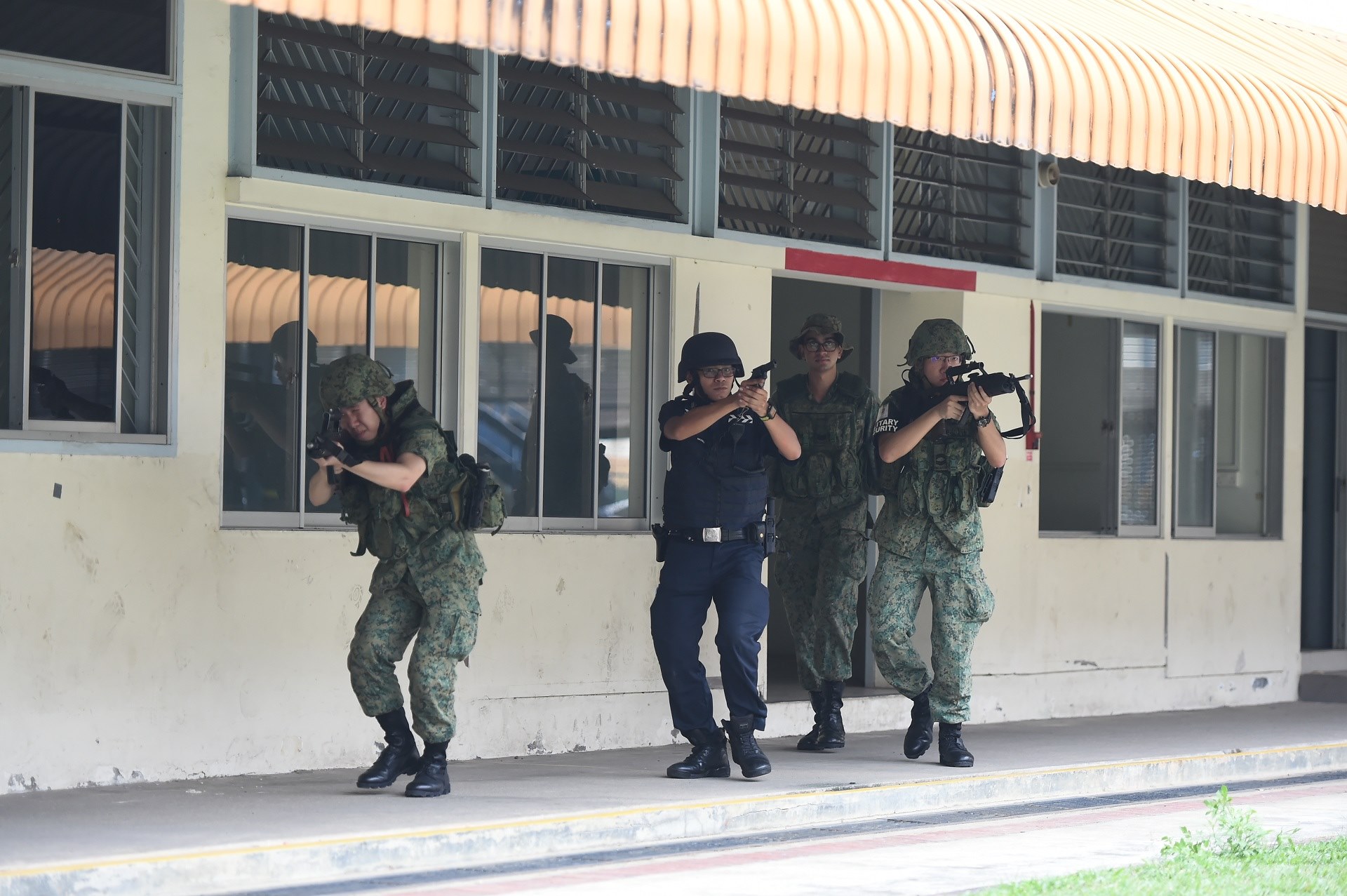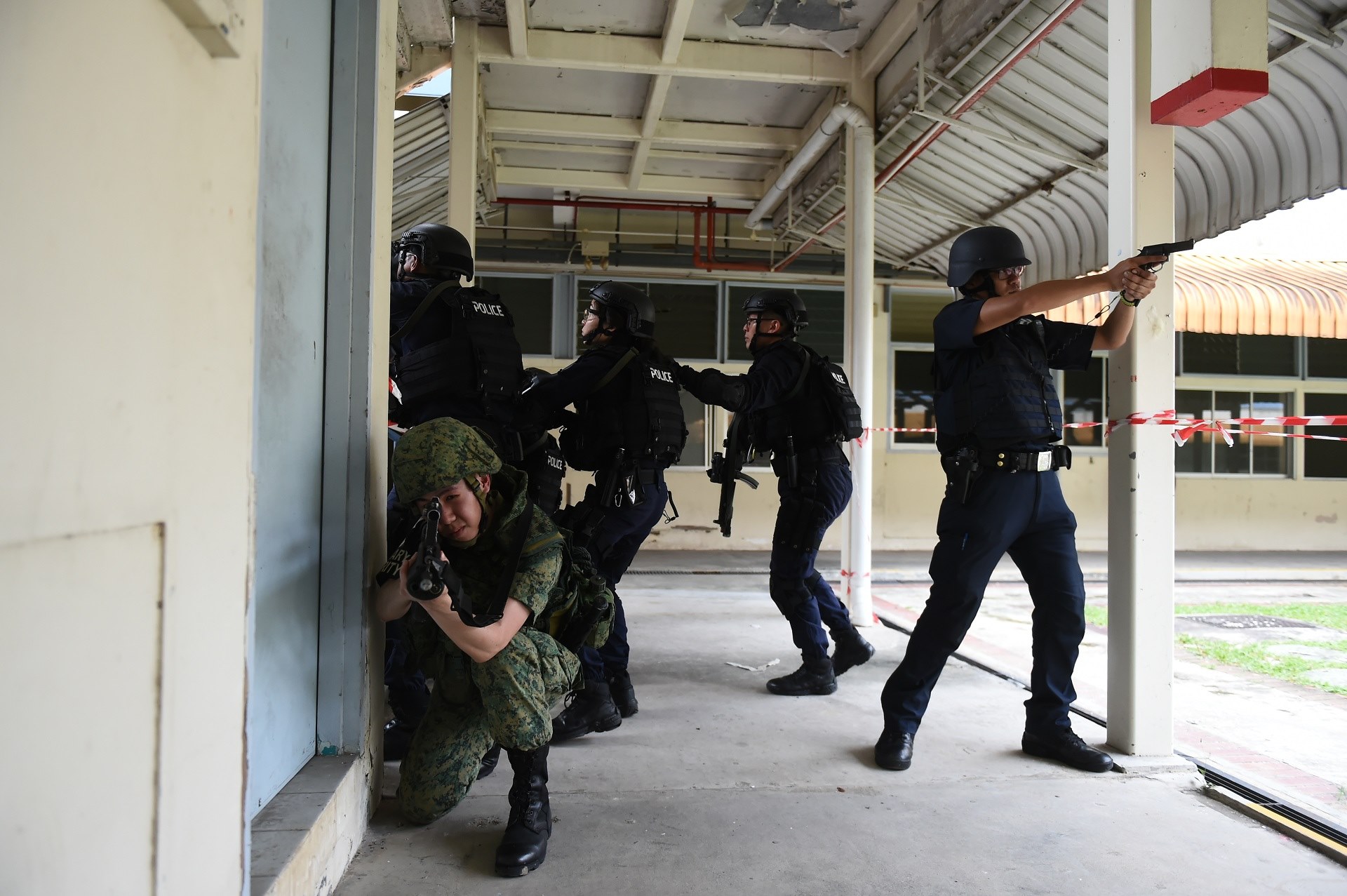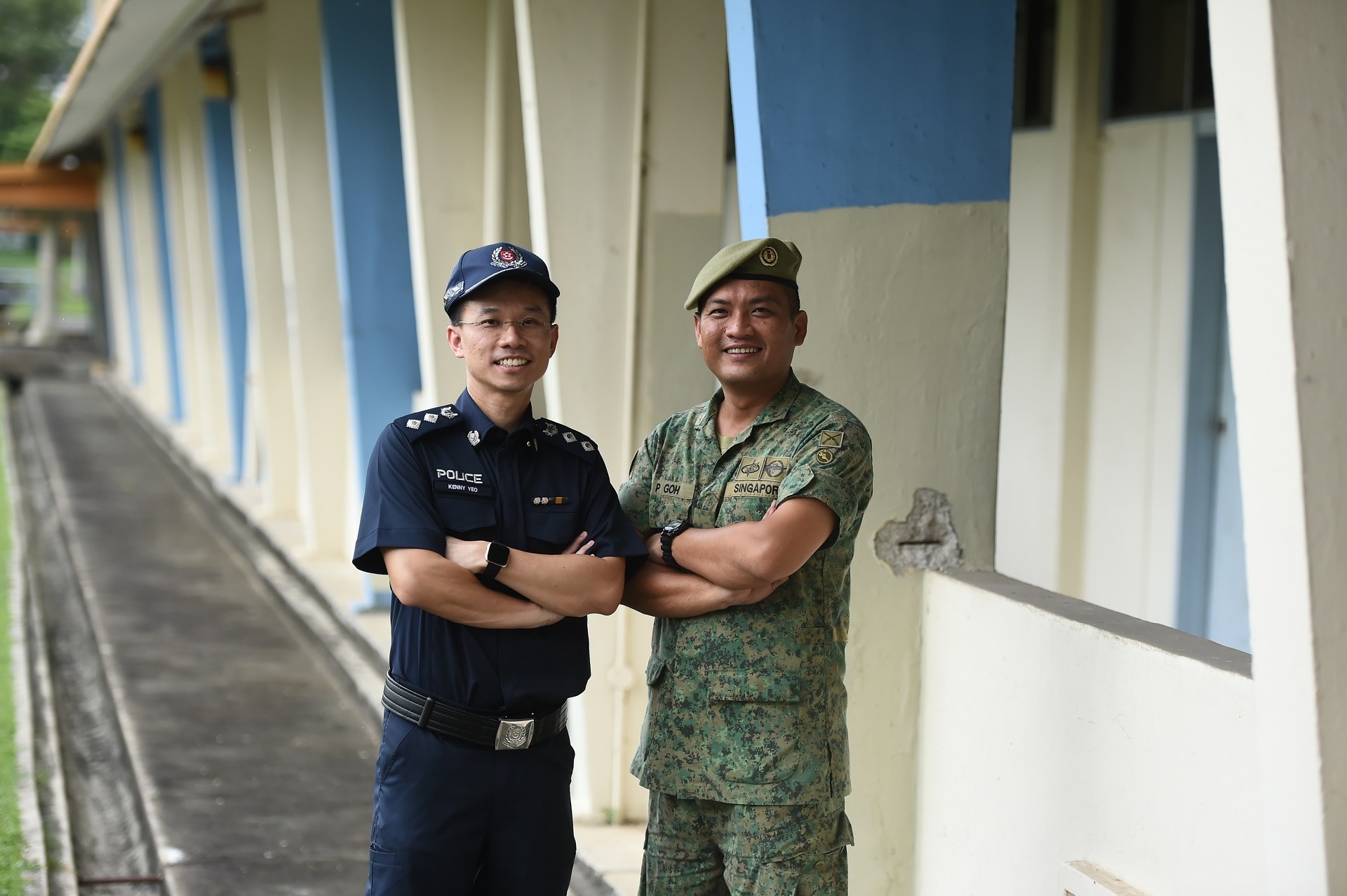OPS & TRAINING
SAF, SPF HOLD JOINT HOMELAND SECURITY TRAINING REGULARLY
08 Nov 2018
Screams punctured the air as gunshots were fired. People spilled from the building in a frenzy. Shortly after, the gunman emerged with a hostage.

Screams punctured the air as gunshots were fired. People spilled from the building in a frenzy. Shortly after, the gunman emerged with a hostage.
Summoned by the commotion, two Singapore Armed Forces (SAF) soldiers and one Singapore Police Force (SPF) officer who were patrolling nearby immediately attempted to diffuse the situation.
It was a stand-off. As the SPF officer tried to calm the perpetrator, the SAF soldiers trained their Singapore Assault Rifle (SAR) 21 on him. Negotiations break down and the agitated gunman begins to drag his hostage towards the stairway. After shooting the latter in the leg, he fled upstairs.
Meanwhile, the Ground Response Force and Emergency Response Team (ERT) from the SPF took charge of the situation.
The ERT swiftly cornered and shot the man as he tried to charge at them. It was another day saved.
This was just one of four scenarios that the SPF and SAF have been practising on as part of their training in homeland security operations since January.
Co-conducted by the SAF's Homeland Security Training Centre (HSTC) and the SPF's Frontline Policing Training Centre (FPTC), these half-day sessions ready the forces for deployments alongside their counterparts to de-escalate and neutralise threats in heightened situations.
"It's important (to) have joint training between the SAF and SPF so that we can understand each other's operating concept, rules of engagement and ground tactics so that we can have better coordinated response during a public security threat incident," explained Commanding Officer (CO) FPTC Superintendent (SUPT) Kenny Yeo, 44.
While SAF soldiers are traditionally trained in conventional warfare, the rise of terror threats has prompted an expansion of their scope of operations to include homeland security. Apart from honing tactical competencies, the joint training also enhances operational familiarity and builds mutual trust between the two agencies.
These regular sessions also allow soldiers to be deployed quickly alongside their SPF counterparts during major events such as the 33rd ASEAN Summit, if necessary.
"We need to be ready," said CO HSTC Lieutenant Colonel (LTC) Goh Boon Ping, 39.
"The soldiers (have to) be trained in the skill sets and understand the legal framework (so that they can) be deployed alongside police officers when the need arises."
To date, seven joint training sessions have been conducted. A total of 22,000 SAF Full-Time National Servicemen (NSFs) and Operationally-Ready National Servicemen (NSmen) have also been trained for homeland security operations.
Gelling together
Trying to fix a schedule between two major agencies is no easy task and it took several months to design the training syllabus.
FPTC training command trainer Inspector (INSP) Indra Devi, 54, recalled: "We came up with the scenarios based on our standard operating procedures (and) talked about how we would apply the rules of engagement for a particular scenario."
The training syllabus was designed based on commonly-seen situations. These include restoring public order in a rowdy crowd, diffusing a knife attack, responding to an active shooter clad in an improvised explosive device and subduing a hostage-holding gunman.
The joint training has proven to be beneficial for 3rd Sergeant (3SG) Rushil Ramesh.
The 19-year-old trainer from HSTC, who guides his trainees on their actions across the various scenarios, felt that he now has a better insight into SPF's operations. He also had to learn their code words and jargon as they differed from the SAF's.
"Through observing the SPF, I know more about their operations and I can guide my troopers…to better gel with them during training," said 3SG Ramesh.
For Corporal First Class (CFC) (NS) Andrew Fung, one of the challenges he faced during the joint training was building mutual trust with his SPF patrol counterpart within a short period of time.
"This is rather new to us – operating in a peacetime scenario and learning about each other's rules of engagement. It takes some time to learn and relate," said the 25-year-old NSman from Headquarters 9th Singapore Division.
Nevertheless, he sees the value of these lessons.
"As NSmen, we need to be ready to take on operations when called upon. Being exposed to peacetime training is important and by doing so, we widen our operational capabilities."
ALSO READ IN OPS & TRAINING

Exercise Wallaby 2025: To see better, shoot faster
31 Oct 2025
The SAF focuses on complex strike missions and multi-domain integration in Exercise Wallaby 2025, the 35th edition of its largest unilateral overseas exercise.

Ex Wallaby 25 – Greater Integration and Complexity
25 Oct 2025
The 35th edition of the SAF’s largest unilateral overseas exercise is an opportunity for expanded scale and deeper integration towards an effective, networked fighting force.

Ex Forging Sabre ramps up use of unmanned assets in integrated strike operations
12 Sep 2025
In this 10th edition of Exercise Forging Sabre, the SAF sharpened its cutting edge for the dynamic modern battlefield, with expanded integration between manned and unmanned platforms.





